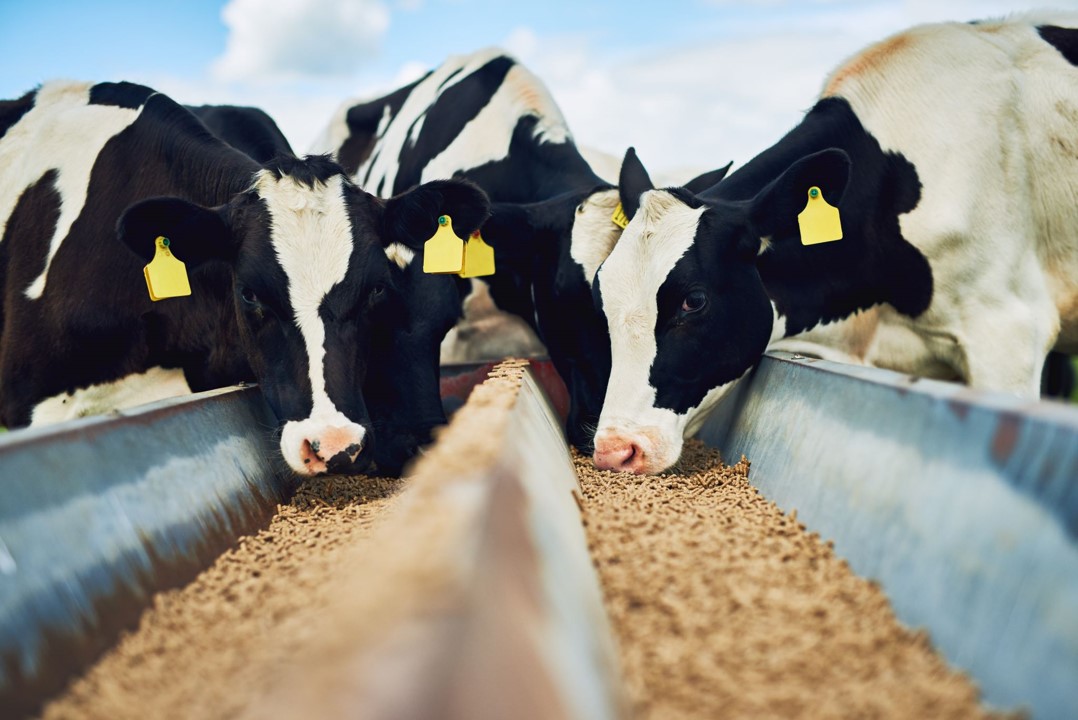THE OPEN
July beans: 7 higher
July meal: .70 higher
July soyoil; 37 higher
July corm: 6 higher
July wheat: 7 lower
The markets opened as called with July corn once again in the lead to the upside with the nearby spread strengthening. As the report time approached volumes dipped with some profit-taking, particularly in oilshare as soyoil prices traded both sides of unchanged.
At 11:00 central time, here is what the June WASDE had to say:
U.S. 2021 Corn, Soybean Production, Yield (million bushels, bushels per acre)
Thursday's
Estimate Average Range USDA May
Corn Production 14,990 15,018 14,990-15,218 14,990
Soybean Production 4,405 4,414 4,405-4,498 4,405
Thursday's
Estimate Average Range USDA May
Corn Yield 179.5 * 179.5 177.0-182.0 179.5
Soybean Yield 50.8 * 50.8 50.5-51.0 50.8
U.S. Stockpiles (million bushels)
2020-21
Thursday's
Estimate Average Range USDA May
Corn 1,107 1,205 1,132-1,301 1,257
Soybeans 135 122 105-144 120
Wheat 852 868 847-902 872
2021-22
Thursday's
Estimate Average Range USDA May
Corn 1,357 1,414 1,282-1,516 1,507
Soybeans 155 139 117-170 140
Wheat 770 777 661-840 774
World Stockpiles (million metric tons)
2020-21
Thursday's
Estimate Average Range USDA May
Corn 280.6 280.1 276.0-283.0 283.5
Soybeans 88.0 86.7 85.8-87.6 86.6
Wheat 293.5 294.6 293.3-296.0 294.7
2021-22
Thursday's
Estimate Average Range USDA May
Corn 289.4 288.9 280.9-293.8 292.3
Soybeans 92.6 91.6 90.0-94.1 91.1
Wheat 296.8 295.2 288.1-300.0 295.0
2021-22 Wheat Production (million bushels)
Thursday's
Estimate Average Range USDA May
All Wheat 1,898 1,890 1,850-1,919 1,872
Winter Wheat 1,309 1,306 1,278-1,333 1,283
Hard Red Winter 772 757 731-786 731
Soft Red Winter 336 336 316-350 332
White Winter 202 213 195-246 220
2020-2021
Brazil Production (million metric tons)
Thursday's
Estimate Average Range USDA May
Corn 98.5 97.0 89.7-103.0 102.0
Soybeans 137.0 136.2 135.7-137.0 136.0
Argentina Production (million metric tons)
Thursday's
Estimate Average Range USDA May
Corn 47.0 47.1 46.0-48.0 47.0
Soybeans 47.0 46.5 45.0-47.5 47.0
Reaction to the report resulted in higher corn prices, while the soy complex seemed to take a moment or two to digest the numbers. Beans, meal, and soyoil fell sharply minutes after the report.
Beans: 20/21 crush was revised from 2,190 mln bu to 2,175 mln bu, while exports remain unchanged. 20/21 total use was forecast at 4,575 mln bu to 4,560 mln bu in June. 21/22 ending stocks were adjusted higher by 15 mln bu to 155 mln bu, still hitting that tight market as anything under 200 mln bu reflects tight supply.
Corn: USDA reports higher usage of corn amidst higher consumption by the world export market and rising ethanol demand. Corn for ethanol was higher by 75 mln for 20/21 from 4,975 mln bu to 5,050 mln bu, based on the most recent data from the Grain crushings and Co-Products Production report, and weekly ethanol production and refiner and blender input data from May. Exports for 20/21 were raised from 2,775 mln bu to 2,850 mln bu. Total use for corn for 20/21 was raised from 14,870 to 15.020 mln bu.
Wheat: Report was neutral to bearish with most numbers rising. 20/21 exports were raised from 965 to 985 mln bu, with overall production increasing from 1,872 to 1,898 mln bu. No other major changes were noted, except for rising global production on good prospects from the EU and Black Sea. The higher HRW number was largely expected. Feed increased by 10 mln bu.
SOY
- The soy complex traded higher today before the report but into the numbers traders started to book profits on soyoil futures. Meal prices were firm but again is a follower of stronger neighboring markets. July/Dec meal widens out to new lows at $8.50 carry from $7.10 before the report, but post report trades to $11.50 carry. July open interest continues to be rolled forward with July/Nov beans trading down to 1.06 1/4c inverse from 1.15 1/4c before the report, but after the numbers seeing liquidation which sends the inverse down to 91 1/4c.
- Post report also found profit-taking in oilshare. On the bear side of the ledger is a weaker domestic bean basis, and very quiet export activity. November bean prices traded back towards recent ctr highs at $14.80 placed recently before USDA numbers were released. Old crop bean sales stand at 3.808 mmt with China taking 692 tmt and unknown for 1.2 mmt. Combined sales plus shipment total 2.261 bln bu or 99% of the USDA's projected 2.280 bln bu program, with 12 weeks remaining in the marketing year. Post report showed the keen disappointment with the numbers as longs decided to book more profits in beans, sending meal prices back to the recent lowest end of ranges.
- Soyoil futures broke hard as well, testing recent lows from 70c to 71c, which ultimately revealed its trading range. All in all not a great reaction, but the price action could have showed us our consolidation ranges into month's end. Nov beans confirm that recent lows of $14.35 - $14.38 could be value, while July beans breaks to $15.37 but bounces back at midday. Sharply lower soyoil prices weighs on beans, as it appears prices may close in the red.
GRAINS
- Grains opened lower for wheat and higher for corn. The feature of the morning continued to be that of higher nearby corn, with July quickly trading beyond trendline resistance on the chart at $7.03 which triggered more fund buying into the report and a trade post report into the next key resistance level from $7.15 to $7.20. Would note that $7.14 was a peak high before the rally.
- July/Dec corn inverse rallied to 93c before the USDA report from lows of 81c, while Sep/Dec consolidated from 24c down to 18c into the numbers. July wheat prices traded both sides of unchanged after a weaker start with Minneapolis futures turning higher after being sharply lower on the back of better rainfall amounts. KC wheat firms against Chicago, as the report was expected to offer up a more neutral stance for the wheat market.
- After the release of the report corn prices extended gains, though prices did not quite test new ctr highs. This will be a sticking point for the market should we lose the gains from today, though in the big picture pullbacks should be owned. At midday prices in wheat are nearly steady, indicating that a trading range is likely to now set up which could be straddled or strangled. On a weaker day, however, wheat still loses to corn. At midday, corn continues to hold its gains, while wheat prices are mixed to lower.
AT 12:00 THE MARKETS ARE AS FOLLOWS:
HI LO
July beans: 13 lower 15.76 1/2 15.37 1/4
July meal: 3.30 lower 388.90 380.90
July soyoil: 69 lower 72.74 70.16
July corn: 14 higher 7.17 1/2 6.87 3/4
July wheat: steady 6.89 1/4 6.72 3/4
Nov canola: 4.00 lower 762.60 748.00
OUTSIDE MARKETS
Stocks were trading higher up 60 pts with crude oil still in the green at $70.65/barrel with the US dollar at 90.31.
CLOSING COMMENTS
The report verified what traders were expecting, that is to say a more friendly report for corn vs. neutral data for beans and wheat. Good bean supplies from South America and lower crush help to cushion a tight supply situation, while the losses of corn in Brazil this fall makes the US more competitive and the place to come for export. Having said that, we still need ideal weather in the US. So far, the eastern Corn Belt is living up to its standard, while the western Corn Belt and northern plains have its problems.
June is typically a month when escalating prices can reach their overall highs, and we are certainly going to see if the numbers live up to that seasonal. The trend turner could ultimately come from a mix of better weather and a bearish acreage report on June 30. Until then, would expect pullbacks in corn to see support, and since August is the make or break time for beans hard breaks should be purchased as well.
As to the charts, best follow-through to the upside is awarded to July and December corn, as interim resistance at $7.05 and $6.18, respectively, was exceeded. That turns the chart direction higher for both, and pullbacks should be purchased. Would also look at the gap-fill Nov bean price at $14.38 to remain as a source of support, as there is still plenty of season ahead of us. If short, would think about covering something at $14.38, as it appears others had the same idea.
July meal simply remains the bear market ideal, and if needing to price can be patient. The path of least resistance is lower, and prices now appear ready to test $378.30 again. As to soyoil, while prices have fallen back towards key support at 70c, this could also be the bottom of a trading range that could work higher still. The chart outlook has not changed, though we are currently posting an outside day for soyoil. A lower close would find prices possibly working lower, but it remains a buying opportunity as well.
Bottom line: The report may have disappointed the bean bull, but in the big picture any carry-out in beans under 200 mln bu and under 1.5 bln bu for corn represents tight supply. As such, the US cannot afford to lose production due to adverse weather problems. Would continue to still be heads- up to quickly cover shorts and price or own good breaks. The charts are not bearish.
Have a good evening.............
TAGS – Feed Grains, Soy & Oilseeds, Wheat, North America


 The CBOT was mostly higher to end a mostly bearish week with wheat leading the way on several mildly bullish developments. Wheat futures saw price-supportive development in the IGC’s lower 2024/25 global ending stocks forecast, dryness in the U.S. Southern Plains, and smaller Russian 2024...
The CBOT was mostly higher to end a mostly bearish week with wheat leading the way on several mildly bullish developments. Wheat futures saw price-supportive development in the IGC’s lower 2024/25 global ending stocks forecast, dryness in the U.S. Southern Plains, and smaller Russian 2024...
 USDA released the monthly Cattle on Feed report today. Total inventory, placements and marketings all came in lower than the pre-report estimates, though total inventory was at the same volume or higher than last year for the seventh consecutive month. Placements came in well below the average...
USDA released the monthly Cattle on Feed report today. Total inventory, placements and marketings all came in lower than the pre-report estimates, though total inventory was at the same volume or higher than last year for the seventh consecutive month. Placements came in well below the average...